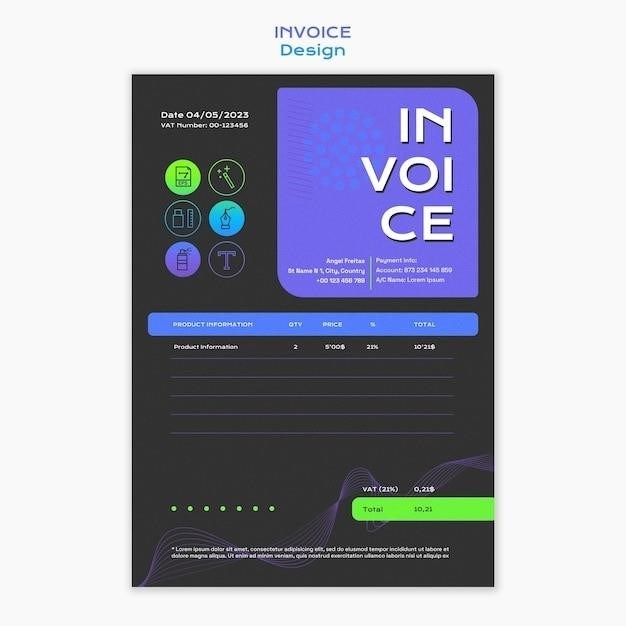Dark They Were‚ and Golden-Eyed⁚ A Deep Dive
Ray Bradbury’s captivating short story‚ “Dark They Were‚ and Golden-Eyed‚” delves into the transformative power of environment and the struggle to maintain identity in the face of change. The story follows the Bittering family‚ who relocate from Earth to Mars‚ only to find themselves slowly adapting to their new Martian surroundings. Their journey presents a compelling exploration of themes like identity‚ language‚ and the ever-present conflict between humanity and the natural world.
The Story’s Setting and Characters
“Dark They Were‚ and Golden-Eyed” takes place on Mars‚ a planet that is both alluring and unsettling. The Martian landscape is described as a vast‚ barren expanse‚ with windswept plains and an atmosphere that feels alien and oppressive. The story’s central characters are the Bittering family‚ led by Harry Bittering‚ a man who initially resists the changes he sees happening to his family. His wife‚ Margaret‚ is more receptive to the Martian environment‚ and their children‚ Dan and Susan‚ are particularly susceptible to the influence of Mars. The family’s interactions with the Martian landscape and the subtle changes they undergo form the core of the story’s conflict and its exploration of themes like identity and adaptation.
The Bittering Family’s Journey
The Bittering family’s journey to Mars is driven by a desire for a fresh start‚ a chance to escape the turmoil of Earth. They arrive on the red planet with hope and optimism‚ but as they settle in‚ they begin to notice subtle‚ unsettling changes. The Martian environment‚ with its unique atmosphere and peculiar wind‚ seems to exert an influence on them‚ subtly transforming their physical and mental states. The children‚ Dan and Susan‚ are particularly affected‚ exhibiting a growing fascination with the Martian landscape and its mysteries. Their transformation is gradual‚ yet undeniable‚ as they begin to adopt Martian names and display an increasing detachment from their Earthly heritage. This journey is not just a physical relocation but also a metaphorical journey of self-discovery‚ as the family confronts the unsettling reality of their changing identities and the potential loss of their humanity.
Themes Explored in the Story
At its core‚ “Dark They Were‚ and Golden-Eyed” explores the profound impact of environment on human identity. The story delves into the intricate relationship between humanity and the natural world‚ questioning the very essence of what it means to be human. Bradbury masterfully portrays the gradual but undeniable shift in the Bittering family’s identity as they adapt to the Martian environment. The constant presence of the wind‚ a symbol of change and the unknown‚ underscores the subtle yet pervasive influence of the planet on the family. The story also touches upon themes of language and communication‚ highlighting how language shapes our understanding of the world and our own identities. The Bittering family’s struggle to maintain their Earthly language in a Martian setting underscores the importance of cultural heritage and the potential for its erosion.
The Symbolism of the Wind
In Bradbury’s “Dark They Were‚ and Golden-Eyed‚” the wind serves as a potent symbol of the Martian environment’s transformative power and the constant threat to the Bittering family’s identity. From the moment they arrive on Mars‚ the wind is described as a relentless force‚ constantly swirling and changing‚ mirroring the uncertainty and instability of their new world. Its presence is both alluring and ominous‚ capable of both invigorating and stripping away the family’s familiar Earthly identity. The wind acts as a constant reminder of the alien nature of their surroundings‚ a force that is slowly but surely reshaping their very beings. As the characters adapt to their new environment‚ their language and behavior begin to shift‚ reflecting the influence of the wind and the Martian landscape.
Man vs. Environment Conflict
At the heart of “Dark They Were‚ and Golden-Eyed” lies a compelling conflict between humanity and the Martian environment. The Bittering family‚ initially resistant to the changes taking place around them‚ struggles to maintain their Earthly identities in the face of a relentless Martian landscape. The wind‚ the red dust‚ and the subtle shifts in their bodies and minds all contribute to a sense of alienation and a gradual transformation into something distinctly Martian. The story highlights the power of the environment to shape human beings‚ forcing them to adapt or risk losing their sense of self. The Bittering family’s journey serves as a cautionary tale‚ reminding us that even in the face of adversity‚ the power of the environment can be a potent force in altering our identities and our very being.
Questions and Answers
“Dark They Were‚ and Golden-Eyed” is a story rich in symbolism and thematic depth‚ prompting readers to consider the nature of identity‚ change‚ and the human relationship with the environment. The following questions and answers offer insight into some of the story’s key elements and provide a foundation for further exploration⁚
What happens at the end of the story? The story concludes with the Bittering family‚ having fully embraced their Martian identities‚ choosing to remain on Mars. The children‚ now fully Martian‚ have adopted Martian names‚ and the family is no longer bound by their Earthly past.
What is the theme of the story? The story explores the themes of change‚ identity‚ and the impact of environment on human beings; It suggests that our surroundings can profoundly influence our sense of self and our connection to the world.
What is Mr. Bittering’s first clue that his world is changing? Mr. Bittering’s first realization of change comes when his children express a desire to adopt Martian names. This signifies a shift in their identity and a growing connection to their new environment.
Why does the Bittering family leave Earth and move to Mars? The family leaves Earth to escape the devastating effects of war. They seek a new beginning and a chance to rebuild their lives in a more peaceful setting.
What happens at the end of the story?
The ending of “Dark They Were‚ and Golden-Eyed” marks a poignant turning point for the Bittering family. After their initial resistance to the Martian environment and its transformative effects‚ they ultimately succumb to its allure. Harry‚ once deeply concerned about the changes he observes in his family‚ finally embraces their new reality. He recognizes that his children are no longer the same‚ having fully adapted to their Martian surroundings and adopting Martian names‚ like “Dan” and “Tii.” This signifies a complete shift in their identity‚ leaving behind their Earthly past.
The story concludes with the family choosing to remain on Mars. They have fully integrated into the Martian society‚ embracing their new lives and acknowledging the profound influence of their environment. The ending underscores the story’s central theme of change and emphasizes the power of adaptation in shaping our identities and destinies.
What is the theme of the story?
At its core‚ “Dark They Were‚ and Golden-Eyed” explores the profound impact of environment on identity and the challenges of maintaining one’s sense of self in the face of change. The story highlights the insidious nature of adaptation as the Bittering family‚ seeking a fresh start on Mars‚ gradually succumbs to the planet’s influence. The Martian environment‚ with its unique atmosphere and mysterious forces‚ begins to alter their physical appearance‚ their values‚ and even their language. This transformation is subtly yet powerfully depicted through their changing eye color‚ their growing affinity for Martian names‚ and their increasing reliance on the Martian wind for guidance.
The story serves as a cautionary tale about the potential consequences of venturing into unknown territories. It underscores the importance of preserving one’s heritage and resisting the allure of assimilation‚ even when faced with the overwhelming power of a new environment. It raises questions about the price of progress‚ the importance of preserving one’s identity‚ and the enduring struggle between human nature and the forces of change.
What is Mr. Bittering’s first clue that his world is changing?
Mr. Bittering’s initial inkling that his world is undergoing a subtle yet unsettling transformation comes from his children’s growing fascination with Martian names. As the family settles into their new Martian home‚ the children‚ particularly his son Dan‚ begin to express a desire to shed their Earthly names and embrace Martian appellations. This shift in their linguistic preferences‚ driven by an unconscious yearning for connection with their new surroundings‚ deeply disquiets Mr. Bittering. He perceives this change as a tangible manifestation of their assimilation into Martian culture‚ a process that he fears will ultimately lead to the erosion of their human identity.
The children’s desire for Martian names serves as a harbinger of the more profound changes to come. It symbolizes a gradual detachment from their Earthly heritage and a growing acceptance of Martian customs and values. Mr. Bittering’s initial resistance to this seemingly innocuous shift reflects his deep-seated fear that the allure of the Martian environment will ultimately eclipse their human essence.
Why does the Bittering family leave Earth and move to Mars?
The Bittering family’s decision to relocate from Earth to Mars stems from their desire to escape the turmoil and destruction wrought by a devastating war. The story doesn’t explicitly detail the nature of the conflict‚ but it’s implied to be a global war that has left Earth ravaged and its future uncertain. The family seeks refuge on Mars‚ hoping to find a haven from the violence and instability that has engulfed their former home. Their motivation is driven by a yearning for peace and stability‚ a desire for a fresh start in a seemingly untouched and unblemished world.
The Martian frontier holds out the promise of a new beginning‚ a chance to rebuild their lives free from the shadow of war. Their decision to embark on this interplanetary voyage is fueled by a blend of hope and desperation‚ a belief that Mars offers a sanctuary from the chaos and destruction that has gripped Earth. The Bittering family’s journey to Mars is a testament to the enduring human desire for peace and the willingness to seek solace in unfamiliar and potentially challenging new worlds.
Analyzing the Characters
The characters in “Dark They Were‚ and Golden-Eyed” are intricately woven into the fabric of the story‚ embodying the themes of change‚ identity‚ and the impact of environment. Harry Bittering‚ the story’s protagonist‚ initially resists the Martian influence‚ clinging to his Earthly identity. His struggle reflects the human tendency to resist transformation‚ to hold onto familiar patterns even when confronted with the unknown. He serves as a foil to his wife‚ who readily embraces the Martian way of life‚ highlighting the spectrum of responses to change.
The children‚ particularly Dan‚ represent the younger generation’s adaptability and willingness to embrace new experiences. Their transformation is faster and more complete‚ symbolizing the malleability of youth and the power of environment to shape identity. Through the contrasting responses of the Bittering family‚ Bradbury explores the complexities of human nature and the interplay between individual agency and the forces that shape our lives.
Harry Bittering
Harry Bittering‚ the patriarch of the family‚ is the story’s central figure‚ embodying the conflict between clinging to the familiar and adapting to the unfamiliar. Initially‚ he is resistant to the Martian environment‚ clinging to his Earthly identity and resisting the changes he sees in his family. He is skeptical of the Martian influence‚ believing it to be a threat to his family’s well-being and their very essence. Harry’s resistance highlights the human tendency to fear change and the unknown. He represents the struggle to maintain one’s identity in the face of powerful external forces‚ showcasing the human need for familiarity and belonging.
Through his journey‚ Harry’s character arc reveals the gradual erosion of his Earthly identity as he succumbs to the Martian environment. His resistance slowly weakens as he witnesses the transformation of his family and the allure of the Martian way of life. This internal struggle makes Harry a complex and relatable character‚ capturing the human experience of grappling with change and the delicate balance between clinging to the past and embracing the future.
The Children
The Bittering children‚ particularly Dan‚ are crucial to the narrative’s exploration of the transformative power of environment. They represent the next generation‚ more open to the changes happening on Mars and less tethered to the past. Dan’s adoption of Martian names and his fascination with the Martian language symbolize a generational shift and an acceptance of the new world. The children’s rapid adaptation to the Martian environment contrasts with their parents’ resistance‚ highlighting the malleability of youth and their ability to embrace the unknown.
The children’s transformation serves as a reflection of the environment’s influence on human identity. They become a mirror for their parents‚ highlighting the inevitability of change and the allure of the Martian way of life. Their gradual shift in identity‚ from Earth-bound children to Martian youth‚ serves as a stark reminder of the impact of environment on human evolution‚ even suggesting that change may be inevitable.
The Importance of Language
Language plays a pivotal role in “Dark They Were‚ and Golden-Eyed‚” serving as a potent symbol of cultural identity and the influence of environment on human perception. The gradual shift from Earthly language to Martian tongue reflects the changing identity of the colonists. The Martian language‚ characterized by its simplicity and lack of nuance‚ represents the stark environment and the gradual loss of complex human thought and emotion.
The children’s adoption of Martian names and their growing fluency in the Martian language symbolize a generational disconnect from Earthly heritage. The parents‚ clinging to their old ways‚ resist the Martian language‚ viewing it as a threat to their identity. This linguistic struggle underscores the tension between the past and the future‚ between the familiar and the unknown. Ultimately‚ language becomes a powerful tool for understanding the story’s central theme of change and its impact on human identity.




















